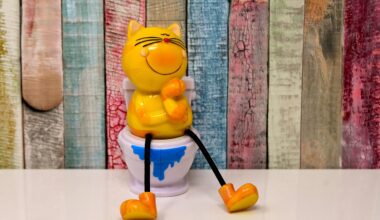Tips for Moving Multi-Cat Housing Solutions to a New Home
When preparing to move your multi-cat housing solutions, it is essential to prioritize the cats’ emotional health. Start by planning how to transport your cats to their new space. It’s advisable to use carriers that are spacious enough for them to feel comfortable. Before the move, familiarize your cats with the carriers by placing treats or toys inside. This technique helps reduce any anxiety they might feel on moving day. You can also keep them in a confined area within your old home while moving is underway. By doing this, you can prevent them from escaping or getting stressed during the hustle. Make sure the carriers are ventilated and stable. During the actual move, try to keep their routine as normal as possible to comfort them, and minimize noise wherever possible. After transporting the cat housing, allow them to explore the new space at their own pace. Cats may need time to adjust, so be patient if they hide initially. Finally, create cozy areas in your new home that mimic their original environment, as this will help them feel secure and at ease during the transition.
Setting Up the New Space
Once you arrive at the new location, focus on setting up your multi-cat housing solutions efficiently. First, designate a comfortable area for their litter boxes and feeding stations close to each other. This ensures that your cats maintain easy access to essentials. Provide multiple litter boxes to accommodate all your cats, promoting a healthier environment. It’s advisable to have one more box than the number of cats. Ensure the boxes are in low-traffic areas to reduce stress. Afterward, arrange their food and water bowls in a space where they feel safe from disturbances. Opt for elevated feeding areas if your cats prefer to eat at different heights. Next, place their beds or resting areas in cozy corners, away from noise. Utilize cat trees and scratching posts, offering vertical spaces for play and relaxation. As cats are territorial, consider which cats will share a space and which will need separate areas to avoid conflicts. Once setup is complete, observe their behavior, providing them with plenty of affection and attention while they adjust. Help them explore their surroundings by engaging them with toys during this settling period.
After successfully moving your multi-cat housing solutions, it’s important to monitor your cats closely. Look for signs of stress or anxiety, which might manifest as excessive hiding, changes in appetite, or aggressive behavior. Provide your cats with plenty of space to roam and hide during this transitional period, as it allows them to feel safe. Keep their favorite toys and blankets within reach, as familiar scents will comfort them. Gradually introduce them to different rooms one at a time. This tactic makes the new environment feel less overwhelming. Make sure to spend quality time with each cat, reinforcing bonding through gentle affection or interactive playing sessions. Additionally, you may want to consult with a veterinarian about possible calming solutions if anxiety persists. Ensure they have access to their favorite perches for observation, as cats often feel more secure when they can survey their spaces from above. This comfort can promote confidence and reduce stress levels. Lastly, allow plenty of time for your cats to adjust, as each cat’s personality plays a role in how quickly they adapt to new surroundings.
Reintroducing Your Cats
For households with multiple cats, reintroducing them after a move can be challenging. Understand that reintroducing cats requires patience and can take time. Start by giving them separate areas within the new home where they feel safe. This separation helps them adjust to the new environment without feeling overwhelmed by each other’s presence. Gradually allow them to become familiar with each other by exchanging scents through items like blankets or toys. After a few days, initiate controlled meetings using baby gates or partially closed doors to monitor their interactions. Observe their body language closely during these interactions. Look for positive behavior, such as sniffing or gentle pawing, which signals that they are feeling comfortable with each other. If aggression or hissing occurs, separate them immediately and try again after a day or two. Continue to reward positive behavior with treats or praise during these interactions. After successive successful meetings, you can transition to supervised playtime sessions, ensuring that you’re prepared to step in if necessary. Over time, they’ll rebuild their relationships in the new home, allowing for a harmonious multi-cat household.
Providing environmental enrichment is critical in your new multi-cat setup, as this promotes mental and physical health for your cats. Incorporate a variety of toys, such as interactive puzzles or treat dispensers, to keep them engaged while also catering to their hunting instincts. Rotating these toys regularly can spark interest and prevent boredom. Additionally, consider building vertical spaces through cat shelves or trees, giving them places to explore and observe. Adding hiding spots or cozy nooks contributes to their base of security. Ensure that every cat in your household has access to their own space for relaxation and to reduce territorial disputes. In the evenings, introduce play sessions to allow them to socialize and bond together. Diverse types of toys, like feather wands or laser pointers, can create exciting chase sequences, promoting physical health and deepening connections. Furthermore, providing stimulation through window perches can offer them views of the outside world, enriching their experience. Consider creating multi-layered spaces for climbing and jumping to keep them active. Regular playtime is vital for their well-being and happiness, ensuring a fulfilling living environment in your new home.
Maintaining Healthy Routines
After the move, it’s important to establish healthy routines for your cats to maintain their well-being. Consistency calms cats, helping them feel secure in their new environment. Begin with feeding schedules; try to maintain the same meal times that they are accustomed to. This routine will help reduce anxiety associated with change. Monitor their eating behavior and drinking habits closely after the move, ensuring they remain adequately hydrated and nourished. Additionally, continue any established care routines, such as grooming and veterinary check-ups. Regular grooming not only helps reduce shedding but also strengthens your bond with your cats. Establish a regional substrate area for scratching posts, as this will maintain their comfort and avoid destructive behavior towards furniture. It’s essential to remain observant of any changes in behavior, such as litter box issues or changes in grooming habits. These behaviors can indicate stress or health issues, and early intervention can prevent escalation. Lastly, provide ongoing mental stimulation through interactive play, as regular engagement combats boredom and promotes companionship, essential for multi-cat households.
Lastly, don’t forget to monitor your cats’ health and emotional well-being through all phases post-move. It’s essential to maintain a close watch on their everyday behavior, as subtle changes can indicate stress or possible health concerns. Schedule a routine veterinary check-up shortly after moving, as a health assessment can secure peace of mind for both you and your pets. Additionally, ensure access to ongoing health management, including vaccinations or flea treatments, especially during seasonal changes. Regular check-ups will help maintain their overall health in their new environment. Observe their interactions and adjust their living arrangements as needed, particularly if you notice signs of stress or territorial issues. Cats are sensitive creatures and may react to changes differently. Therefore, it is crucial to be adaptable in your management approach. Support them with enrichment activities like playtime, which helps reduce anxiety and keeps them healthy. Remember to provide regular positive reinforcement to encourage good behaviors, like using their scratching posts. Ultimately, your goal is to create a harmonious home environment that supports their health and happiness through the transition.
Conclusion
In conclusion, moving multi-cat housing solutions requires comprehensive planning. Throughout the transition, prioritizing your cats’ emotional needs leads to successful acclimatization. Each cat’s adjustment period can differ significantly; thus, being patient is essential during this time. Regularly observing their behavior and providing comfort through familiar items promotes smoother adaptations. Remember to set up your new space to accommodate all your cats’ needs, providing plenty of enrichment and opportunities for exploration. Follow up with proper routines considering meals, grooming, and playtime. Focus on gradual introductions for multi-cat households to maintain harmony and prevent stress. The health of your cats must also be monitored closely; any changes in behavior might signal additional attention is needed. Maintaining a routine during the transition can significantly help reduce anxiety, while ongoing monitoring ensures their well-being remains intact. Lastly, don’t hesitate in seeking veterinary advice should issues arise. Creating a serene living environment tailored to your cats’ needs fosters happiness, ultimately benefiting their well-being. Following these tips will ensure that your cats enjoy a peaceful and joyful life in their new home.


